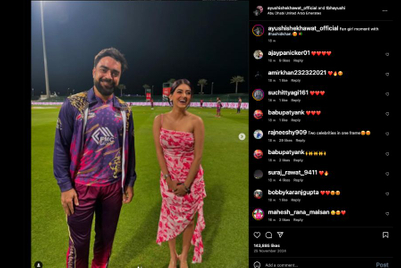
I’m amazed that a number of brands have announced IPL related contests where the gratification involves the winner going to South Africa. I’m doubly amazed that all are FMCG brands.
There’s a fundamental issue with contests of any kind: the gratification must appeal to the consumer and that the consumer should believe that he or she has a chance of winning it.
In this instance, the consumer should have a passport and should believe that he could get a visa – otherwise the first prize is a prize that he has no use winning.
The moment this is true, the consumer loses interest in the promotion.
It’s like asking the consumer to buy a lottery ticket where he is ineligible for the bumper prize.
Perhaps these contests were created for a played-in-India IPL and ‘adapted’ to the now-in-South-Africa edition. I can see no other reason for the seeming lack of thinking.
It would be very different if the promotions ran three months before the tournament, giving non-passport-owning consumers time to get one. When the promotions begin as the tournament does, the promo is almost fated to be ineffective.
Which brings me to the point. At a time that marketers turn to tactical advertising in preference to brand-building, gratification and special offers play a large role in the success or the failure of the marketing effort.
One sees a lack of imagination in the offering that has been created across categories and across a variety of brands.
There could be many reasons why this is so, but my view is very simple: senior creatives do not enjoy working on tactical exercises.
Perhaps they should do a re-think.
As has been proven by advertising for mobile operators, there is a lot one can do even if the communication is about tariff plans and special offers or the launch of minor new value added services.
Some years ago, Maruti, with their pachees ninety nine offer, was a breath of fresh air in the boring ‘buy cars in installments’ advertising category.
Creatives should do a re-think for another reason. With marketers questioning all their spends, tactical spends would be the ones that they will agree most easily to. Take, for example, the white goods sector. They are still to recover from disappointing sales in the last quarter of 2008 despite spending aggressively – and are, therefore, more than a little wary of committing spends. But if agencies could present them with solutions rather than with advertising, demonstrating that the communication would sell more, most product managers would jump out of their seats.
Tactical spends, in a funny way, are also easy to deal with – and you have a lot of time on your hands. Can you think of ideas on how to gain a large share of the Diwali market? Of the Onam market? Of the Durga Puja market? You know when these festivals are and you could start working on the solutions immediately.
Similarly, the wedding season will soon be upon us – can someone get hold of the exact dates?
You know when the schools and colleges close – can you start work on holiday deals now?
While communication like the ones I have listed seem infinitely less sexy than wide-screen, big-budget brand communication, the truth is that (seemingly) measureable tactical advertising is what will help sort out both top-line and bottom-line.
And if you can learn from those who create memorable mobile service advertising, you might learn to enjoy the punishment and pick up a few metals in the process of helping your client gain market-share.
That’s attainable gratification.



.jpeg&h=268&w=401&q=100&v=20250320&c=1)

.jpg&h=268&w=401&q=100&v=20250320&c=1)


.png&h=268&w=401&q=100&v=20250320&c=1)

